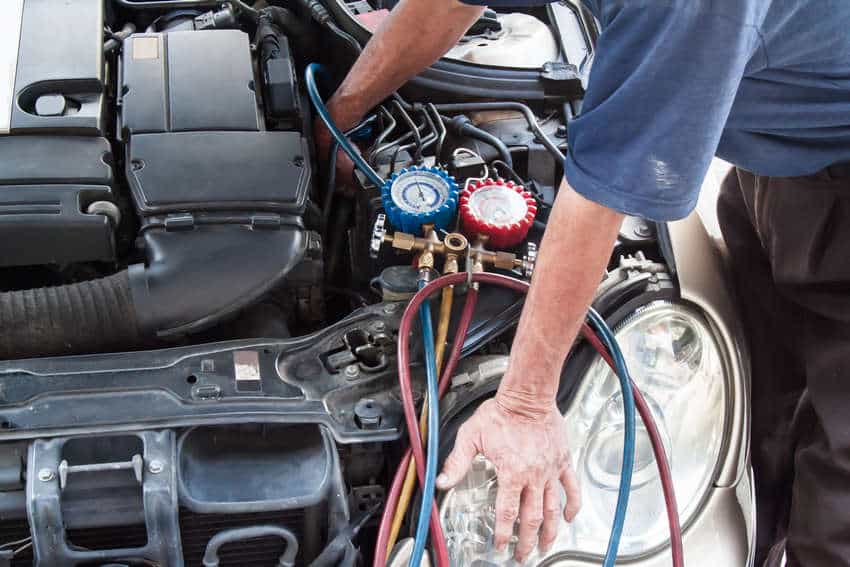So, you’ve just set off on the highway to visit family in the next state over and everything seems to be going fine when suddenly your engine temperature warning light comes on! This nightmare scenario is all too common for many drivers out there, and it is especially frustrating as it’s hard to know whether to keep driving and hope it’s a false alarm or to stop an call for help. The main risk is an overheated engine that at best could result in your vehicle breaking down, and at worst could cause an engine fire! It is, therefore, a good idea to know how to check if your vehicle is leaking coolant so you can locate the issue and fix it before any of these scenarios occur. Here at JD’s Auto Repair, we’re going to tell you how to do exactly that!
How to identify a leak
If you spot a leak under your vehicle, you first need to identify the liquid that’s leaking. Engine coolant tends to be colored – either green, yellow, or pink, and it tends to have a slightly slimy feel and a sweet smell. You may need to do a test by marking the tank with a Sharpie and then coming back to it in a day or so to see if the level has changed significantly. Once you’ve identified that the liquid leaking from your vehicle is coolant, you’ll need to look for the source itself.
Finding the source
Unfortunately, there are many points within the cooling system that can spring leaks so it’s good to know these to locate the source of the problem. Start by checking the radiator. This may be easy to spot if a puddle of coolant is forming underneath it. Check the seams and the bottom of the radiator as it may be that the leak is very small but expands once the engine is hot. Check for rust spots that may have corroded right through the radiator. Even if your radiator is made of aluminum, it can still corrode or be punctured by road debris but may be harder to see as it won’t have rusted like steel.
If you can’t find the source of the leak itself on the radiator, you will need to check the hoses from the radiator to the engine, the radiator cap, the water pump, engine block, thermostat, reservoir tank, or the heater core. Of course, you should always make sure that the engine is cool before you make these checks! If you still can’t find the source of the leak, there is another possibility – the coolant may be escaping as steam through a tiny hole or crack when the engine is running. This type of leak doesn’t leave a trace so it is virtually impossible to find without expert knowledge and equipment. If you suspect this is the case, it’s time to take your car to the mechanics!
Coolant leaks are actually very common but often people don’t realize they’re taking place. If you suspect your vehicle is leaking coolant, check to find the source rather than risking the engine overheating and endangering your life and causing irreversible damage. If you still can’t find the source, bring your vehicle down to JD’s Auto Repair where we can run quality checks on the whole cooling system to pinpoint the source of the leak and get you back on the road as soon as possible!




